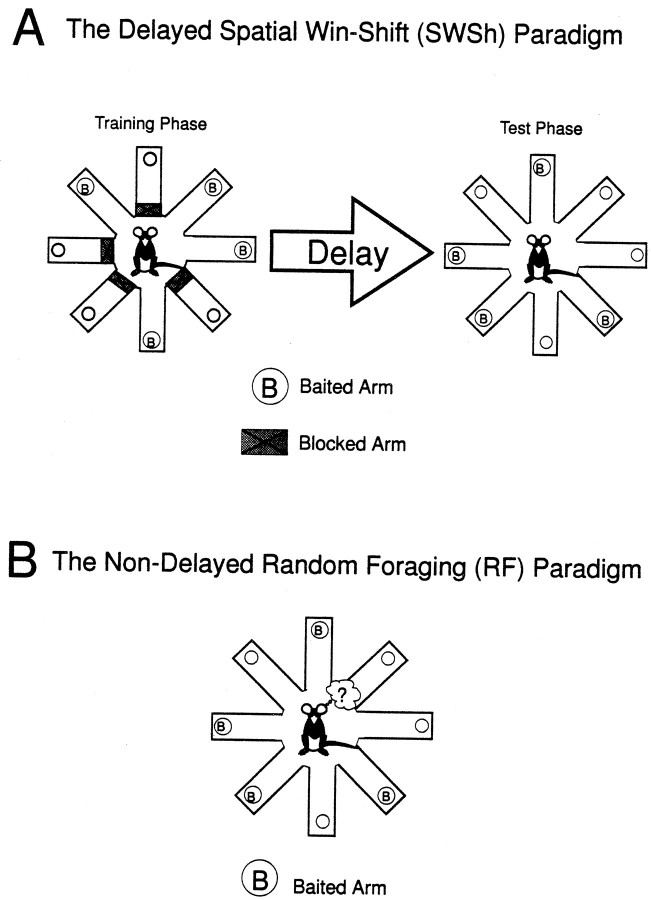Fig. 1.
Diagrams of the delayed spatial win-shift (SWSh) and the random foraging (RF) eight-arm radial-maze tasks.A, The delayed SWSh task consists of a training and a test phase. During the training phase, 4 of 8 arms on a radial maze are randomly blocked, and the 4 remaining open arms are baited. Once the animal has retrieved the 4 pieces of food from the open arms, it is removed from the maze for a delay (ranging from 5 to 30 min). After the delay, the animal is placed back onto the maze for the test phase. The arms that were blocked previously are now open and baited. The rat must remember which arms were previously blocked and enter them to receive the food reward. B, The nondelayed RF task consists of one phase. Four arms are randomly baited each day. The optimal foraging strategy entails entering the arms in a nonrepetitive manner. Unlike the test phase of the delayed SWSh task, the animal has no previous knowledge of the location of food at the beginning of a nondelayed RF trial.

